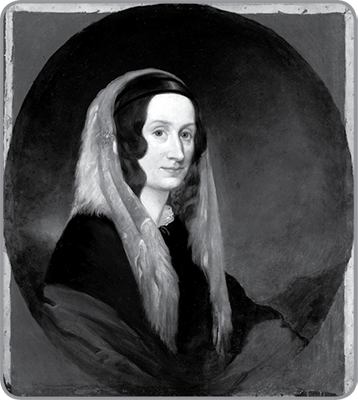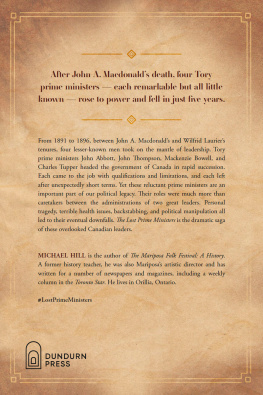PRIME
MINISTERS
WIVES
Those Who Endure
Lavona Fercho

Copyright 2020 Lavona Fercho.
All rights reserved. No part of this book may be used or reproduced by any means,
graphic, electronic, or mechanical, including photocopying, recording, taping or by
any information storage retrieval system without the written permission of the author
except in the case of brief quotations embodied in critical articles and reviews.
This book is a work of non-fiction. Unless otherwise noted, the author
and the publisher make no explicit guarantees as to the accuracy of
the information contained in this book and in some cases, names of
people and places have been altered to protect their privacy.
Archway Publishing
1663 Liberty Drive
Bloomington, IN 47403
www.archwaypublishing.com
844-669-3957
Because of the dynamic nature of the Internet, any web addresses or
links contained in this book may have changed since publication and
may no longer be valid. The views expressed in this work are solely those
of the author and do not necessarily reflect the views of the publisher,
and the publisher hereby disclaims any responsibility for them.
Any people depicted in stock imagery provided by Getty Images are
models, and such images are being used for illustrative purposes only.
Certain stock imagery Getty Images.
ISBN: 978-1-4808-9764-9 (sc)
ISBN: 978-1-4808-9765-6 (hc)
ISBN: 978-1-4808-9766-3 (e)
Library of Congress Control Number: 2020920114
Archway Publishing rev. date: 12/29/2020
CONTENTS













ISABELLA CLARK
MACDONALD
18111857

It is very late and John is receiving company downstairs & baby
is asleep beside me. He is not well & oh darling, darling sister my
very soul is bound up in him God pardon me if I sin in this.
ISABELLA CLARK MACDONALD, 1848

I n the spring of 1842, Isabella Clark and her sisters, Margaret and Jane, were at their farmhouse at Ballafreer, as their farm was called, near Douglas on the Isle of Man, a small island in the Irish Sea between Ireland and Scotland. They were waiting for a gentleman visitor from Canada who was arriving any day. They had recently received a letter from their sister Maria, who had moved to Kingston, Canada, after marrying her husband, John Alexander Macpherson, in 1834. Maria wrote excitedly that a popular young man would probably visit them at Ballafreer.
Isabella was born in 1811 in the Scottish Highlands, into a society almost devoid of government and grounded in questionable church influence. Women of the period had little status and children were treated as chattel. It was common to see women and children as young as 5 years of age working at hauling trucks or hutches full of coal to the surfaces in the mines or working below ground cleaning the debris from coal extractions.
The Clarks were more comfortable than many families in the Scottish Highlands. They moved to the Isle of Man because of its low income tax and reasonable cost of living. Isabellas father was reported to be a sea captain who made a living with bounty harvested from the sea, as well as produce provided by the farm. Isabellas three brothersJohn, James and Williamall became involved in the military in some capacity. Her mother died when Isabella was 4 years old. She soon became coddled and fostered by her older siblings.
Margaret, who was 12 years older than Isabella, married John Ward, a prosperous American who died a few months after their wedding, leaving her a small pension and an estate. After his death, Margarets primary concern was the care of Isabella and Jane, who grew up happy with the best Margaret could provide in nurture and education. Isabella felt a warm and mutual concern for her brothers and sisters.
One of the earliest pictures of Isabella shows a young lady with fine feminine features and a porcelain complexion. Her dark hair was worn brushed straight into side curls or ringlets with a centre part, the fashion of the Victorian times. Her most outstanding feature was said to be her big blue eyes.
The gentleman caller Isabella and her sisters were expecting was 27-year-old John Alexander Macdonald, a lawyer from Kingston, the capital of Canada. He too was born in Scotland, in 1815, and was actually Isabellas half-first cousin. Johns mother, Helen, and Isabellas mother, Anna Macpherson, were stepsisters. John was tall and slim with a pale, almost translucent complexion; a pear-shaped nose; and dark, curly, unruly hair. He was known to be well-spoken and charismatic and had a unique sense of humour.
The Isle of Man was 48 kilometres long by 17 kilometres wide, with a range of mountains over 600 metres terminating northward, which restricted ground travel. Roads carved over many years of travel were rough and rutted. Ballafreer was fairly inaccessible, and visitors were not too common.

Portrait of Isabella Macdonald 1852 oil on canvas
Helen was described as being strong, forthright and the matriarch of the family. Johns father, Hugh, was frequently described as a chronically unsuccessful merchant in Glasgow. Helen provided the incentive and direction for John, brother James and sisters Margaret and Louisa. The family eventually immigrated to Canada in 1820, as had thousands of others, seeking a better life, affordable land and the promise of prosperity.
Shortly after their move to Kingston, John, then 7 years old, saw his 5-year-old brother James being knocked unconscious by Kennedy, a drunken employee of their parents who was acting as child minder while their parents were away. The whole family was present when James later died in convulsions. The family did not notify the police, and Kennedy was never charged. Years later, as an adult, John still recalled the death of his brother as being traumatizing.
Hughs success in areas of job security in Kingston continued to remain elusive, but both parents were committed to their childrenespecially John having the best education available. They lived in Hay Bay on the outskirts of Kingston, and John and his sisters walked three miles each day to attend primary school. Three years after his brother died, John left his family home for Kingston, where he lived as a boarder to attend grammar school. His sisters were never to continue with their education.
Next page



























